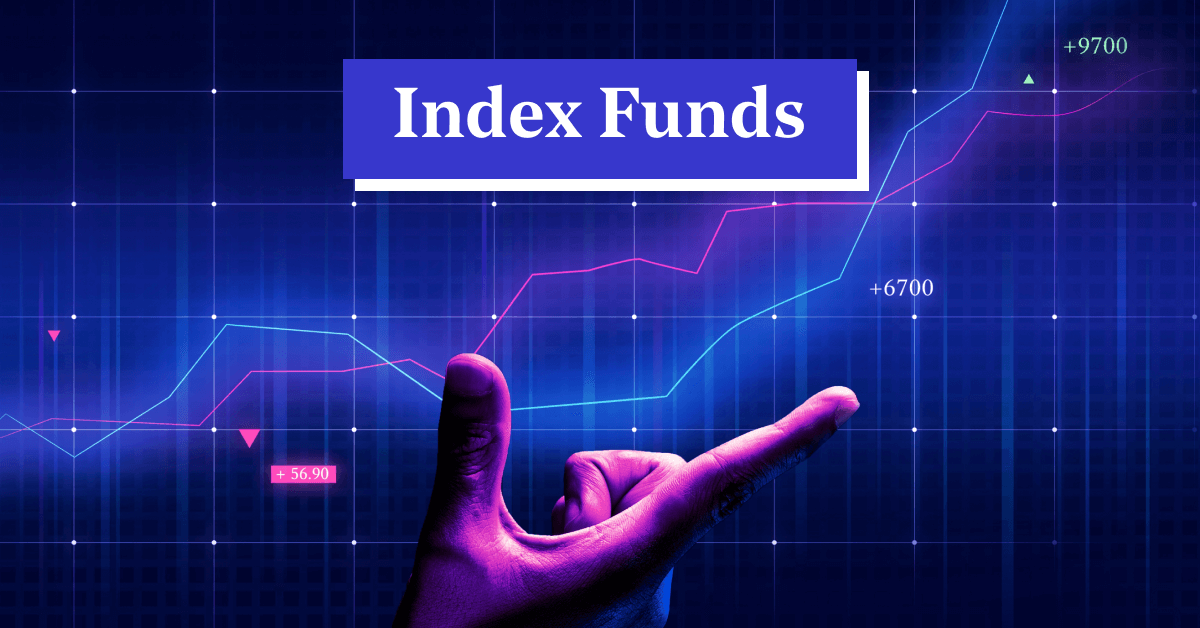
Understanding Mutual Fund Expenses and Fees
Mutual funds are pooled investments managed by professional money managers. They trade on exchanges and give investors with access to a diverse range of assets chosen for the fund. A professional fund manager controls this mix of investments, and the fund's assets and aims are described in the prospectus.
For individuals who deposit into their mutual funds from their paychecks, they provide automated investing and reduced investment risk than purchasing equities on your own since most funds have varied holdings.
These funds contain most of the retirement money of middle-income Americans, but this wasn't always the case. In 1980, barely 6% of U.S. households had money in mutual funds. By 2023, over 52% of American households were invested in them, and these families owned shares for a great majority, 88%, of all mutual fund assets.
When putting away their money in mutual funds, these families may access a wide choice of products, which can help decrease their risk compared to investing in a single stock or bond. Investors gain returns depending on the fund's performance less any fees or charges levied. Mutual funds are typically the investment of choice for middle America, offering a large swath of middle-income individuals with professionally managed portfolios of stocks, bonds, and other asset classes.
Understanding Mutual Funds
Mutual funds are described as a portfolio of investments financed by all the investors who have acquired shares in the fund. So, when a person buys shares in a mutual fund, they obtain part-ownership of all the underlying assets the fund holds. The fund's success relies on how its aggregate assets are performing. When these assets improve in value, so does the value of the fund's shares. Conversely, as the assets decline in value, so does the value of the shares.
The mutual fund manager controls the portfolio, selecting how to split money among sectors, industries, firms, etc., depending on the strategy of the fund. About half of the mutual funds owned by American families are in index equity funds, which have portfolios that consist and balance the assets of indexes to mimic the S&P 500 or the Dow Jones Industrial Average (DJIA).4 The biggest mutual funds are managed by Vanguard and Fidelity. They are also index funds. These normally offer low investment risk, unless the majority of the market goes down. Nevertheless, over the long term, index funds related to the market have gone higher, helping to achieve the financial goals of many future retirees.
How Are Earnings Calculated for Mutual Funds?

Investors generally gain profits from a mutual fund in three ways:
-
Dividend/interest income: Mutual funds distribute the dividends on stocks and interest on bonds held in its portfolio. Funds generally provide investors the alternative of either getting a cheque for dividends or reinvesting profits for further shares in the mutual fund.
-
Portfolio distributions: If the fund sells assets that have gained in price, the fund earns a capital gain, which most funds also pass on to investors in a distribution.
-
Capital gains distribution: When the fund's shares grow in price, you may sell your mutual fund shares for a profit in the market.
-
When examining the returns of a mutual fund, you'll generally come onto a number for the "total return," or the net change in value (either up or down) during a certain time. This comprises any income, dividends, or capital gains the fund has produced combined with the change in its market value over a particular time. In most instances, total returns are offered for one, five, and 10-year periods, as well as from the day the fund began or inception date.
Types of Mutual Funds
There are various sorts among the more than 8,700 mutual funds in the U.S., with most in four broad categories: stock, money market, bond, and target-date funds.
Stock Funds
As the name indicates, this fund invests largely in equities or stocks. Within this category are numerous subcategories. Some equity funds are named for the size of the businesses they invest in: corporations with small-, mid-, or large-sized capitalization. Others are termed by their investing approach: aggressive growth, income-oriented, and value. Equity funds are also classed by whether they invest in U.S. stocks or overseas shares. To illustrate how different methods and amounts of assets might mix, you can utilize an equity style box like the one below.
Value funds invest in equities their managers regard as cheap while aiming for long-term gain when the market acknowledges the stocks' actual worth. These firms are characterized by low price-to-earnings (P/E) ratios, low price-to-book ratios, and dividend yields. Meanwhile, growth funds aim on firms with robust earnings, sales, and cash flow growth. These firms often have high P/E ratios and do not pay dividends. A compromise between rigorous value and growth investing is a "blend." These funds invest in a combination of growth and value equities to produce a risk-to-reward profile somewhere in the center.
Large-cap corporations have market capitalizations of above $10 billion. Market cap is obtained by multiplying the share price by the number of shares outstanding. Large-cap stocks are normally for blue-chip corporations whose names are known. Small-cap stocks have a market valuation between $250 million and $2 billion. These firms tend to be newer, riskier bets. Mid-cap stocks fill in the space between small- and large-cap.
A mutual fund may mix diverse investing strategies and business sizes. For example, a big-cap value fund would include in its portfolio large-cap businesses that are in solid financial form but have lately seen their share values decline; they would be put in the top left quadrant of the style box (large and value). The antithesis of this would be a small-cap growth fund that invests in new technology businesses with great growth potential. This sort of fund is in the bottom right quadrant above (small and growing).
Bond Funds
A mutual fund that delivers a steady and minimal return is part of the fixed-income category. These mutual funds concentrate on assets that pay a defined rate of return, such as government bonds, corporate bonds, and other debt instruments. The bonds should earn interest income that's passed on to the owners, with little investment risk.
There are also actively managed funds seeking relatively inexpensive bonds to sell them at a profit. These mutual funds will likely yield better returns but aren't without risk. For example, a fund specialized in high-yield trash bonds is significantly riskier than a fund that invests in government securities.
Because there are many different kinds of bonds, bond funds may vary considerably depending on whether and when they invest, and all bond funds are vulnerable to risks associated to fluctuations in interest rates.
Index Mutual Funds

Index mutual funds are meant to imitate the performance of a certain index, such as the S&P 500 or the DJIA. This method needs less research from analysts and advisers, thus less expenditures are passed on to investors via fees, and these funds are built with cost-sensitive investors in mind.
They also commonly beat actively managed mutual funds and hence could represent the uncommon combination in life of cheaper cost and superior return.
Balanced Funds
Balanced funds invest across diverse assets, whether equities, bonds, the money market, or alternative investments. The purpose of these funds, known as an asset-allocation fund, is to decrease risk via diversification.
Mutual funds describe their allocation techniques, so you know ahead of time what assets you're indirectly investing in. Some funds adopt a strategy for dynamic allocation percentages to fulfill varied investor goals. This may involve adapting to market circumstances, business cycle changes, or the changing stages of the investor's own life.
The portfolio manager is usually given the leeway to vary the ratio of asset classes as required to preserve the fund's declared strategy.
Money Market Mutual Funds
The money market comprises of secure, risk-free, short-term financial instruments, principally government Treasury notes. The returns on them aren't big. A typical return is a bit higher than the amount earned in a conventional checking or savings account and a little less than the average certificate of deposit (CD). Money market mutual funds are commonly utilized as a temporary holding place for cash that will be used for future investments or for an emergency reserve. While low risk, they aren't guaranteed by the Federal Deposit Insurance Corporation (FDIC) like savings accounts or CDs.
Income Funds
Income funds are aimed to dispense income on a consistent basis, and are frequently viewed as the mutual funds for retirement investment. They invest largely in government and high-quality corporate debt, keeping these bonds to maturity to produce income streams. While fund assets may appreciate in value, the main purpose is to deliver a constant cash flow.
International mutual funds
An international mutual fund, or foreign fund, invests solely in assets situated outside an investor's native country. Global funds, however, may invest anywhere globally. Their volatility depends on where and when the money are invested. However, these funds may be part of a well-balanced, diversified portfolio as the profits from abroad may offer a buffer against weaker returns at home.
Regional Mutual Funds

Often transnational in scope, regional mutual funds are investment vehicles that specialize on a certain geographic area, such as a country, a continent, or a group of nations with comparable economic features. These funds invest in stocks, bonds, or other securities of firms that are based, or produce a large portion of their revenue, inside a designated area.
Examples of regional mutual funds include Europe-focused mutual funds that invest in that continent's securities; emerging market mutual funds, which focus on investments in developing economies worldwide; and Latin America-focused mutual funds that invest in countries like Brazil, Mexico, and Argentina.
The major benefit of regional mutual funds is that they enable investors to capitalize on the development potential of certain geographic regions and diversify their portfolios worldwide. However, these funds also pose distinct dangers, such as political instability, currency volatility, and economic uncertainty, albeit they differ on the location.
Sector and Theme Mutual Funds
Sector mutual funds try to benefit from the success of certain areas of the economy, such as banking, technology, or health care. Theme funding may span across industries. For example, a fund focusing on AI may contain assets in organizations in health care, military, and other fields utilizing and developing up AI outside the tech industry. Sector or theme funds may have volatility from low to high, and their negative is that in many areas, stocks tend to rise and fall together.
Socially Responsible Mutual Funds
Socially responsible investment or so-called ethical funds invest solely in firms and areas that match established requirements. For example, some socially responsible funds do not invest in businesses like tobacco, alcoholic drinks, weaponry, or nuclear power. Sustainable mutual funds invest mostly on green technologies, such as solar and wind power or recycling.
There are additional funds that consider environmental, social, and governance aspects while picking investments. This method focuses on the company's management practices and whether they lean toward environmental and community betterment.
Mutual Fund Fees
When investing in mutual funds, it's crucial to understand the fees connected with them, since these expenses will dramatically impact your investment returns over time. Here are some typical mutual fund fees:
Expense ratio: This is an annual charge that covers the fund's operational expenditures, including management fees, administrative costs, and marketing expenses. The expense ratio is expressed as a percentage of the fund's average net assets and is deducted from the fund's returns. Pressured by competition from index and exchange-traded funds (ETFs) and other market developments, mutual funds have decreased the cost ratio by more than half during the previous 30 years. In 1996, equity mutual fund investors suffered cost rates of 1.04% ($1.04 for every $100 in assets). By 2022, that average had reduced to 0.44%, according to the Investment Company Institute. The expenses for bond mutual funds were marginally less at 0.37%, while hybrid models, which frequently need more administration, had expenditure fees average 0.59%.9
Sales costs or loads: Some mutual funds impose sales fees, known as "loads," when you purchase or sell shares. Front-end loads are levied when you acquire shares, whereas back-end loads (or contingent and delayed sales costs) are assessed if you sell your shares before a particular deadline. Sometimes, however, management companies provide no-load mutual funds, which don't have commission or sales expenses.
Redemption fees: Some mutual funds impose a fee when you sell shares within a limited time (typically 30 to 180 days) after acquiring them, which the U.S. Securities and Exchange Commission (SEC) restricts to 2%. This charge is aimed to prevent short-term trading in these funds for stability.
Other account costs: Some funds or brokerage companies may impose extra fees for maintaining your account or transactions, particularly if your balance falls below a set minimum.
Classes of Mutual Fund Shares

If you're seeking to decrease your costs, you'll want to check the sort of mutual fund shares you purchase. Traditionally, ordinary investors would acquire mutual funds with A-shares via a broker. Then, a front-end load of up to 5% or more, plus management fees and continuing costs for distributions (also known as 12b-1 fees), would be piled on. Financial advisers marketing these products may persuade customers to purchase higher-load packages to gain fees. With front-end funds, the investor pays for these charges when they purchase into the fund.
To rectify these concerns and fulfill fiduciary-rule criteria, investment firms have designated new share classes, including "level load" C shares, which normally don't have a front-end load but bear a 12b-1 annual distribution charge of up to 1%.
Funds that charge management and other fees when investors sell their holdings are known as Class B shares.
How To Invest in Mutual Funds
Investing in mutual funds is generally basic and entails the following steps:
-
Before purchasing shares, you should check with your company whether they provide extra mutual fund products because they can come with matching funds or are more helpful tax-wise.
-
Ensure you have a brokerage account with adequate deposits and access to acquire mutual fund shares.
-
Identify mutual funds matching your investing objectives for risk, returns, fees, and minimum investments. Many platforms provide fund screening and research tools.
-
Determine how much you wish to invest and submit your trade. If you wish, you may likely set up automatic repeating investments as requested.
-
While these investments are most commonly for the long term, you should still check on how the fund is performing occasionally, making modifications as appropriate.
-
When it's time to close your trade, put a sell order on your platform.
What Are the Risks of Mutual Funds?
Depending on the assets they own, mutual funds incur many investment risks, including market, interest rate, and management risk. Market risk stems from the possible drop in the value of the securities inside the fund. Interest rate risk impacts funds owning bonds and other fixed-income instruments, since higher interest rates may lead to a reduction in bond values.
Management risk is tied to the performance of the fund's management team. You are placing your money in their hands, and bad investing selections will severely effect your returns. Before investing, it's crucial for investors to thoroughly analyze the fund's prospectus and assess their personal risk tolerance and investment goals.
Real Also: Determine The Pricing Of Mutual Funds
What Is a Target Date Mutual Fund?
When investing in a 401(k) or other retirement savings account, target-date or life cycle funds are popular. Choosing a fund that develops toward your retirement, like a hypothetical FUND X 2050 (which would target a 2050 retirement year), implies investing in a mutual fund that rebalances and automatically alters its risk profile to a more conservative approach as the goal date grows near.
The Bottom Line
Mutual funds are adaptable and accessible for consumers wishing to diversify their holdings. These funds aggregate money from investors for stocks, bonds, real estate, derivatives, and other securities—all managed for you. Key advantages include access to diverse, professionally managed portfolios and picking among funds geared to various goals and risk tolerances. However, mutual funds come with fees and charges, like yearly fees, expense ratios, or commissions, that will help decide your total results.


